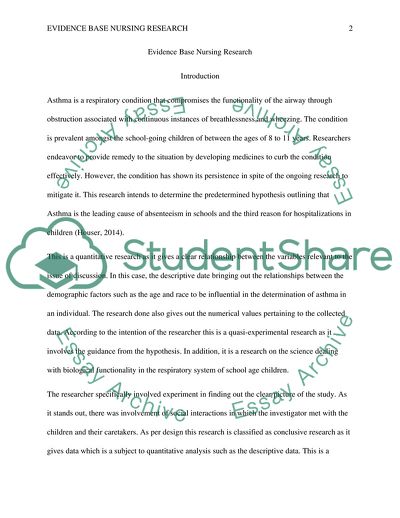Evidence base nursing research Essay Example | Topics and Well Written Essays - 750 words. https://studentshare.org/health-sciences-medicine/1846185-evidence-base-nursing-research
Evidence Base Nursing Research Essay Example | Topics and Well Written Essays - 750 Words. https://studentshare.org/health-sciences-medicine/1846185-evidence-base-nursing-research.


